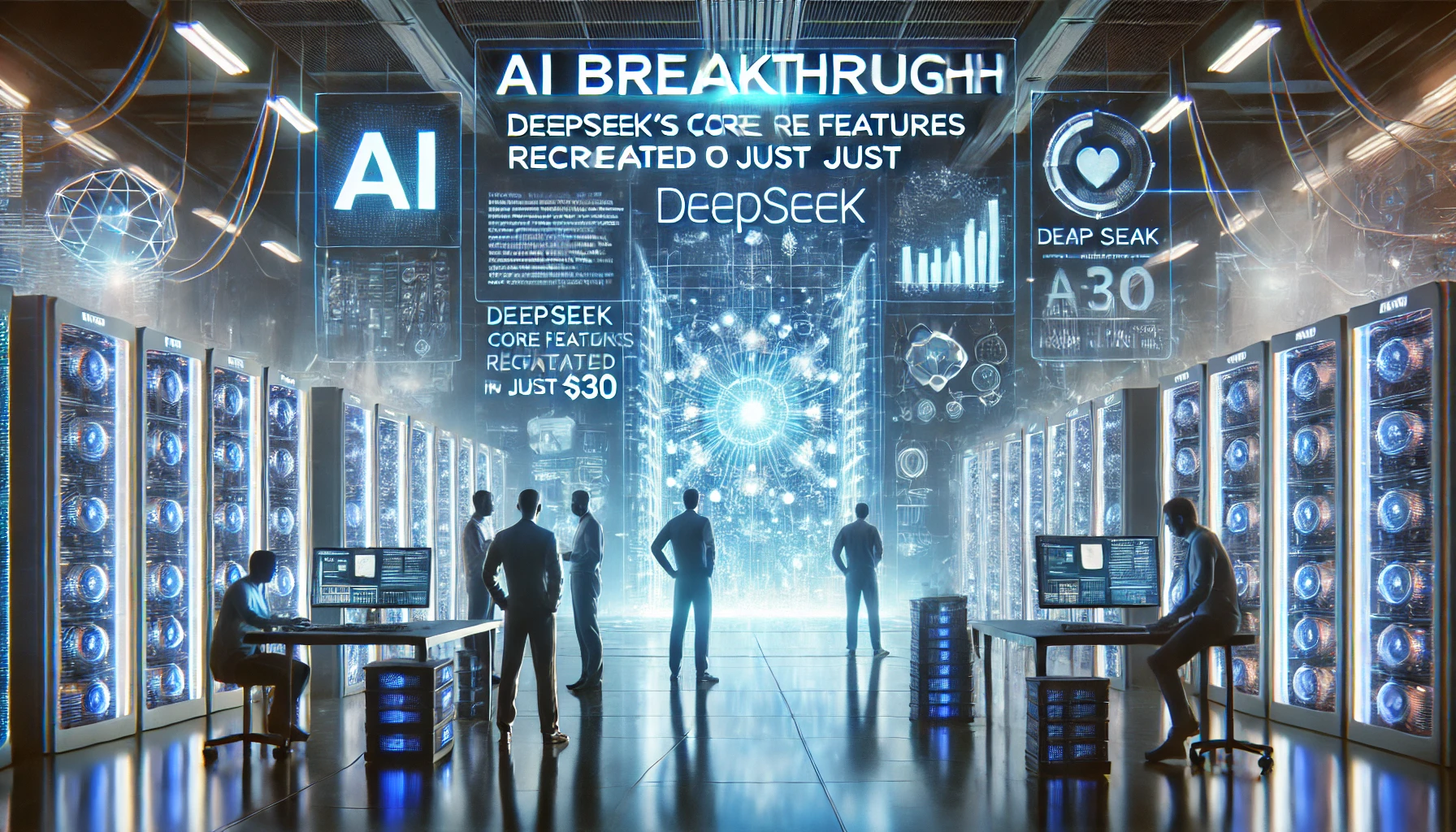Artificial Intelligence (AI) has long been seen as a field requiring massive financial investment. From OpenAI’s GPT models to Google’s Gemini, creating advanced AI typically involves millions—if not billions—of dollars. However, a recent breakthrough has challenged this notion.
Researchers from the University of California, Berkeley, have successfully replicated core aspects of DeepSeek R1, a powerful AI model, for just $30. This raises exciting questions: Is AI development becoming more accessible? Can small teams rival tech giants in innovation?
Let’s break this down in a simple and easy-to-understand way.
What Is DeepSeek AI?
DeepSeek AI is a large language model (LLM) similar to ChatGPT and Google’s Gemini. It was developed in China and is known for its advanced reasoning and problem-solving abilities.
- The DeepSeek R1 model has 671 billion parameters.
- It was built for under $6 million, which is already a fraction of what OpenAI or Google spends on similar models.
- DeepSeek uses reinforcement learning and self-verification techniques to improve its reasoning.
Now, the surprising part: a small team at UC Berkeley has replicated key features of DeepSeek’s model for just $30 using a much smaller AI system.
How Was DeepSeek’s AI Recreated for Just $30?
A PhD student named Jiayi Pan led a team at UC Berkeley to create TinyZero, a model that mimics DeepSeek’s core functionalities but at a fraction of the cost.
Here’s how they did it:
- Smaller Scale – Instead of using 671 billion parameters, their model has just 3 billion parameters.
- Focused Tasks – They trained their AI on specific reasoning tasks, like solving math puzzles (e.g., the “Countdown game”).
- Reinforcement Learning – Their AI teaches itself by trying different solutions and learning from mistakes.
- Self-Verification – The AI double-checks its own answers, a key feature in DeepSeek’s original model.
💡 Key Takeaway: You don’t need a billion-dollar budget to build an AI that can reason effectively.
Why Is This a Big Deal?
This research proves that AI development doesn’t have to be expensive. With clever engineering and the right training approach, even a small team of researchers can create an advanced AI system.
Potential Impacts:
✅ Cheaper AI Models – Smaller companies and researchers can build powerful AI without huge funding.
✅ Open-Source AI Growth – This could inspire more developers to build AI models with limited resources.
✅ Fairer AI Competition – Tech giants no longer hold a monopoly on AI advancements.
Can Anyone Build an AI Model Like This?
Technically, yes! If you have access to computing resources and knowledge of machine learning, you can experiment with AI development at a low cost.
Some free tools that can help you get started:
- Hugging Face (huggingface.co) – Open-source AI models
- Google Colab (colab.research.google.com) – Free cloud computing for AI
- PyTorch & TensorFlow – Popular AI frameworks
With TinyZero’s success, we might see more researchers and even hobbyists building their own AI models.
Final Thoughts
The idea that only big tech companies can build AI is starting to fade. If a PhD student and a small team can replicate aspects of DeepSeek’s AI for just $30, imagine what the future holds!
We’re entering a new era where affordable AI innovation is possible. Whether you’re a developer, researcher, or just an AI enthusiast, this is an exciting moment.
Sources & References
- The Independent – AI Researchers Replicate DeepSeek for $30
- Financial Times – DeepSeek R1 Model and Its Cost
- YouTube Video – DeepSeek R1 Cloned for $30?!
What do you think? Can small teams disrupt AI development? Let me know in the comments!
[SEO optimized]
[SEO optimized]


